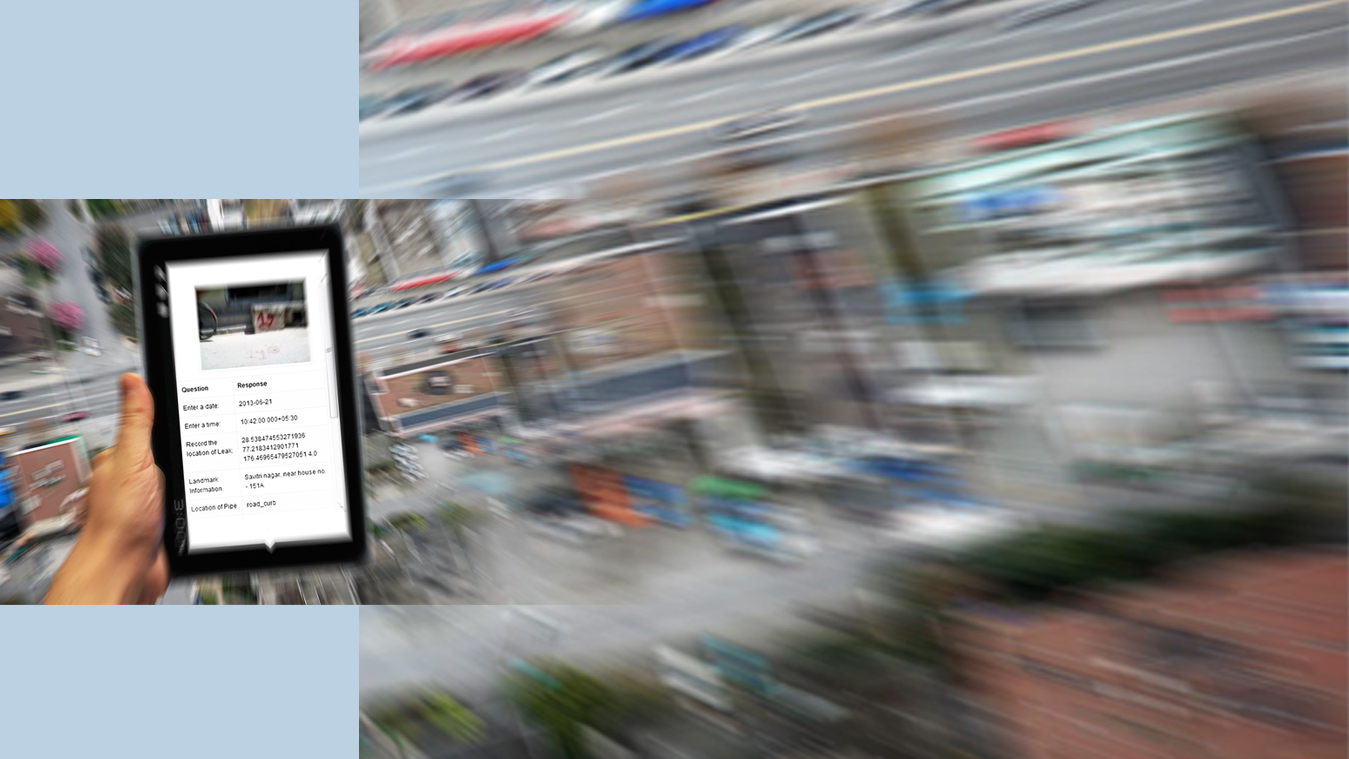The mission
GIS is a powerful tool, that effectively links data on a real-time basis, and enables the user to solve problems by uncovering and analyzing trends. In India, SUEZ has pioneered the integration of GIS into the water distribution sector.
Our Solution
At Malviya Nagar, the water is supplied from an underground reservoir (UGR), located within the project area (approximately 14km2). To manage water distribution effectively, the project needs to efficiently plan and manage the use of the facilities, water supply network, and various assets (including booster pumping stations, tube wells, and water tankers), concerning the volume of demand from the customers.
To create a complete database of the existing assets and customers’ details, a team was pro-actively engaged during the initial phase of the project. The client provided some of the base map data related to the supply network and tube wells. However, the spatial data provided was not complete; they needed to be verified so that a topological database can be generated.
To have a precise customers’ data, hi-res satellite images were acquired, and to verify it further, surveyors conducted household surveys to build a spatially referenced database of customers (including their location, address, connection status and the number of household members - Population). Mobile GIS applications were deployed and used intensively for updating the information on the ground.
Similarly, for the distribution network, test pits were conducted to verify the available data. This exercise further confirmed the need to digitalize and update the data as there was a high frequency of mismatch in field observations and the data provided by the customers (in terms of the location, material, and diameter of the pipes).
To understand flow through the supply network and assessing the locations where additional water pressure may be required because of changes in elevation, a contour map with a resolution of the one-meter interval has been constructed. From this contour map, a digital elevation model (DEM) was derived that gives the perspective views of the project area.
Based on the customer mapping and base map data (shape file of buildings, addresses, and consumer IDs) as well as the customer complains about no water supply, water leakage and water tanker requests received by the call center, a complaint information map is being created regularly.
MNWS has successfully integrated GIS and remote sensing with the construction drawings, leak detection, and mapping, consumer survey and assets to reduce response time and increase efficiency. All our supervisors and project monitoring team are geared up with the latest mobile application and tablets for real-time monitoring.
MNWS was the first water distribution improvement project by SUEZ in India. Through this project, SUEZ was able to showcase its expertise in improving access to reliable, safe and potable water to the customers. The results have been encouraging, and SUEZ is committed to performing better in the coming years.
Geographical information systems (or GIS) is a tool for managing, analyzing, interpreting, and displaying spatial data. The primary objective of any Utility is to deliver a commodity such as water or electricity from a 'source’ to the customer. The spatial aspect of data, associated with any water utility service (e.g., the location of customers, distribution network and location of assets), makes the use of GIS critical to the management and analysis of data, for the MNWS project.
Since in this project, we are directly dealing with customers, the information flow whether it’s about the distribution network or any complaint of a customer related to this network, quick response and action are very much essential. To ensure this, a real-time operational performance monitoring system (ROPeS) was developed, especially keeping in mind the requirement of the utilities and customers in India.
The Results
Through this tool, we are now in a position to monitor and operate different activities by utilizing the available and relevant data to offer a quick and feasible solution to the problem.
- All customers (55000) of MNWS project area are mapped into the GIS system
- Real-time monitoring and management of all operation and management activities
- Water distribution system assets mapped into the GIS system
- Water Tanker’s real-time monitoring and mapping
- Quick response and solution to customer requests and queries of customers based on real-time location-based information
- 900 + test pits to find out buried Asset (water pipes, valves, etc.) and mapped into GIS
- In house cost effective and real-time integrated system for all the departments to get information on one platform - ROPES
